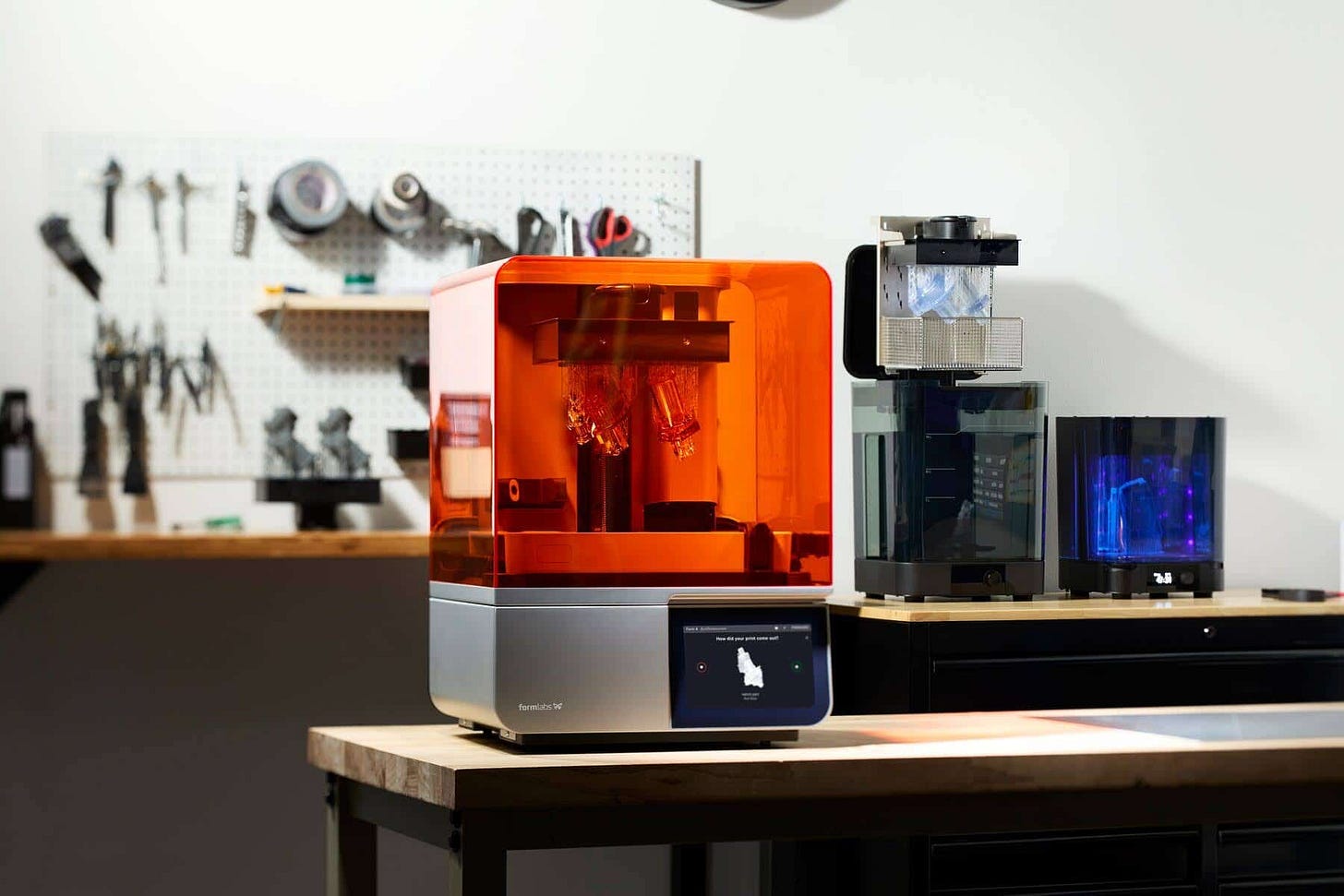04-17-2024: Formlabs presented the new generation of its flagship 3D printers – the Form 4 series
It marked a departure from traditional laser-based stereolithography
On April 17, 2024, Formlabs introduced a new generation of photopolymer 3D printers: the Form 4 and Form 4B models. It was the company’s first major product launch in several years. The Form 4 was designed for general industrial and design applications, while the Form 4B was tailored to meet the needs of the medical and dental sectors. Both printers used a new print engine called Low Force Display (LFD), which enabled a significant increase in print speed compared to previous generations – from two to five times faster.
The redesigned hardware included a new light unit featuring 60 high-power LEDs, along with a cooling system and collimating lenses. The light passed through a specially developed Light Processing Unit 4 (LPU 4), which incorporated polarizers, optical coatings, and a custom LCD screen with high light transmission and a resolution of 50 microns per pixel. The goal was to ensure high precision and uniform curing of the material across the entire build platform.
The company moved away from traditional laser technology in favor of a masked SLA system, which uses a combination of LED lights and an LCD display. This marked a major shift in Formlabs’ approach to SLA technology. The new printer generation also introduced a new type of flexible resin tank and a proprietary Release Texture surface, designed to reduce peel forces between the cured layer and the bottom of the tank. This was intended to improve print reliability and enable higher speeds without compromising quality.
The Form 4 and 4B were compatible with over 23 of Formlabs’ existing resins, along with new materials developed specifically for high-speed printing and dental applications. The company claimed that users could learn to operate the new printer in just a few minutes, without the need for specialized training.
In terms of technical specifications, the printers offered a defined build volume, dimensional accuracy of ±0.04 mm over 20 mm, and print resolutions up to 1200 × 1200 × 1600 dpi with a layer height of 16 microns. Operational efficiency and running costs were expected to be significantly lower due to longer-lasting components and more affordable materials. The cost per print was projected to drop by up to 40% compared to previous models.
The Form 4 and Form 4B were intended for both rapid prototyping and small-batch production, especially in the medical and dental fields.
Source: www.formlabs.com






